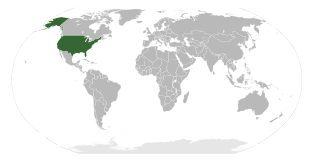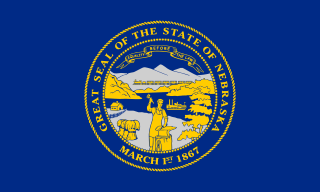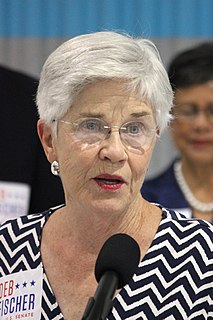It has been requested that the title of this article be changed to List of governors of Nebraska . Please see the relevant discussion on the discussion page. The page should not be moved unless the discussion is closed; summarizing the consensus achieved in support of the move. |
| Governor of Nebraska | |
|---|---|
 Seal of Nebraska | |
| Style | The Honorable |
| Residence | Nebraska Governor's Mansion |
| Inaugural holder | David Butler |
| Formation | Constitution of Nebraska |
| Salary | $105,000 (2013) [1] |
The following is a list of the governors of the U.S. territory and later state of Nebraska.

United States territory is any extent of region under the sovereign jurisdiction of the federal government of the United States, including all waters and all U.S. naval vessels. The United States asserts sovereign rights for exploring, exploiting, conserving, and managing its territory. This extent of territory is all the area belonging to, and under the dominion of, the United States federal government for administrative and other purposes. The United States total territory includes a subset of political divisions.

In the United States, a state is a constituent political entity, of which there are currently 50. Bound together in a political union, each state holds governmental jurisdiction over a separate and defined geographic territory and shares its sovereignty with the federal government. Due to this shared sovereignty, Americans are citizens both of the federal republic and of the state in which they reside. State citizenship and residency are flexible, and no government approval is required to move between states, except for persons restricted by certain types of court orders. Four states use the term commonwealth rather than state in their full official names.

Nebraska is a state that lies in both the Great Plains and the Midwestern United States. It is bordered by South Dakota to the north; Iowa to the east and Missouri to the southeast, both across the Missouri River; Kansas to the south; Colorado to the southwest; and Wyoming to the west. It is the only triply landlocked U.S. state.
Contents
- Territorial governors
- State governors
- Notes
- Other high offices held
- Appointing presidents
- Living former governors of Nebraska
- See also
- References
- External links
Prior to becoming a territory, Nebraska Territory was part of Louisiana Territory, officially known as the Missouri Territory from 1805 to 1821.

The Territory of Louisiana or Louisiana Territory was an organized incorporated territory of the United States that existed from July 4, 1805, until June 4, 1812, when it was renamed the Missouri Territory.

The Territory of Missouri was an organized incorporated territory of the United States that existed from June 4, 1812 until August 10, 1821. In 1819, the Territory of Arkansas was created from a portion of its southern area. In 1821, a southeastern portion of the territory was admitted to the Union as the State of Missouri, and the rest became unorganized territory for several years.
























































